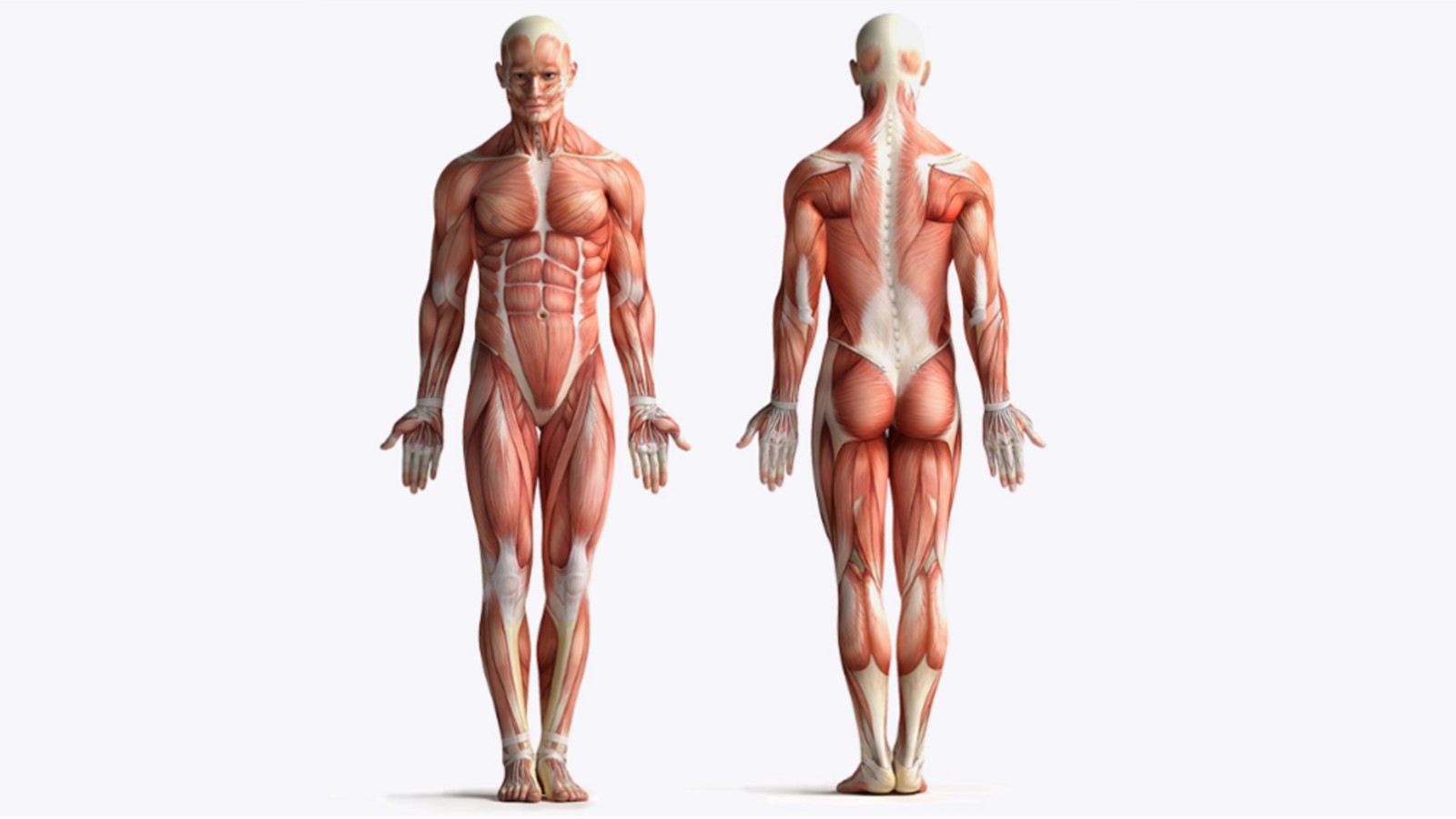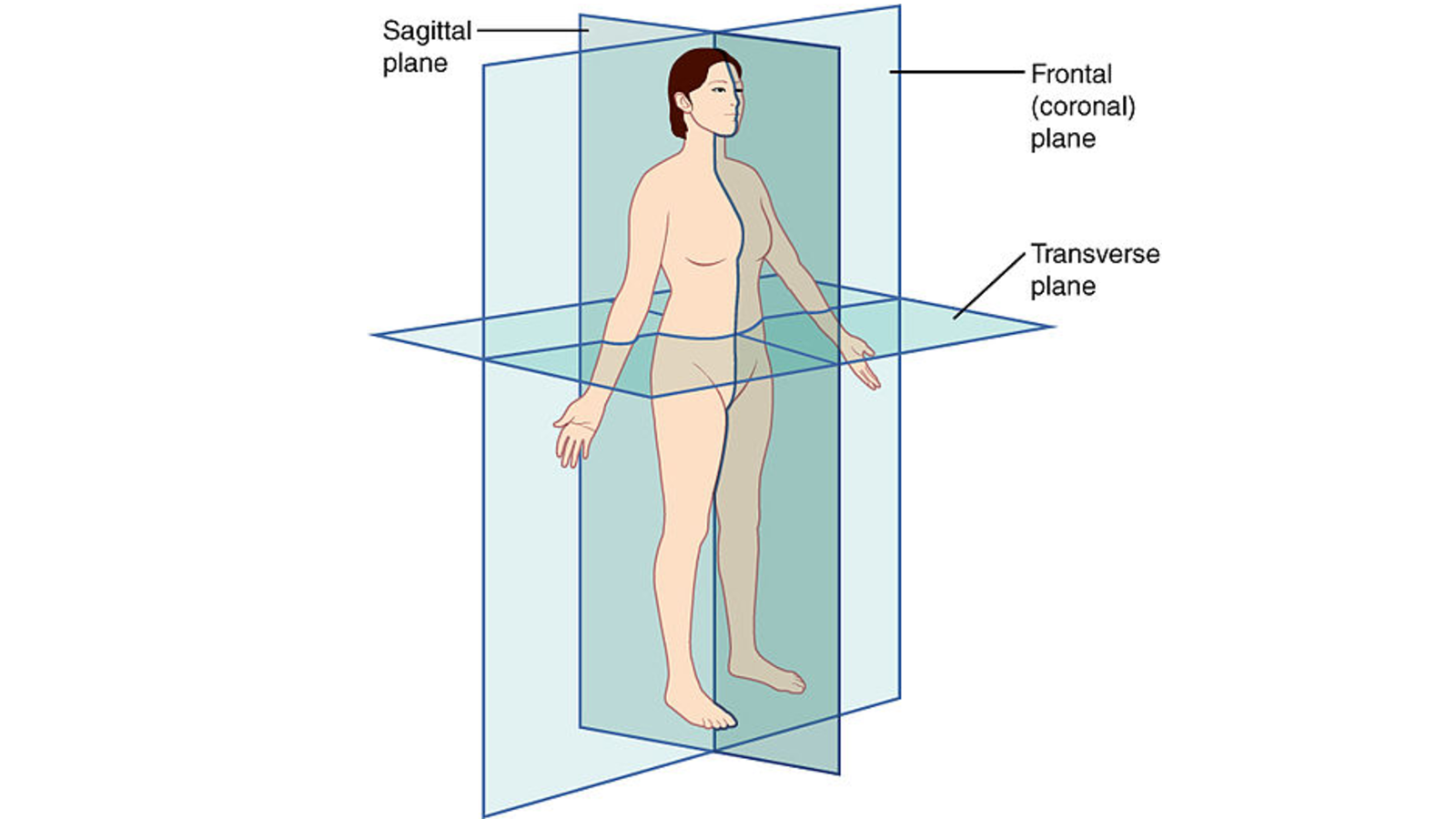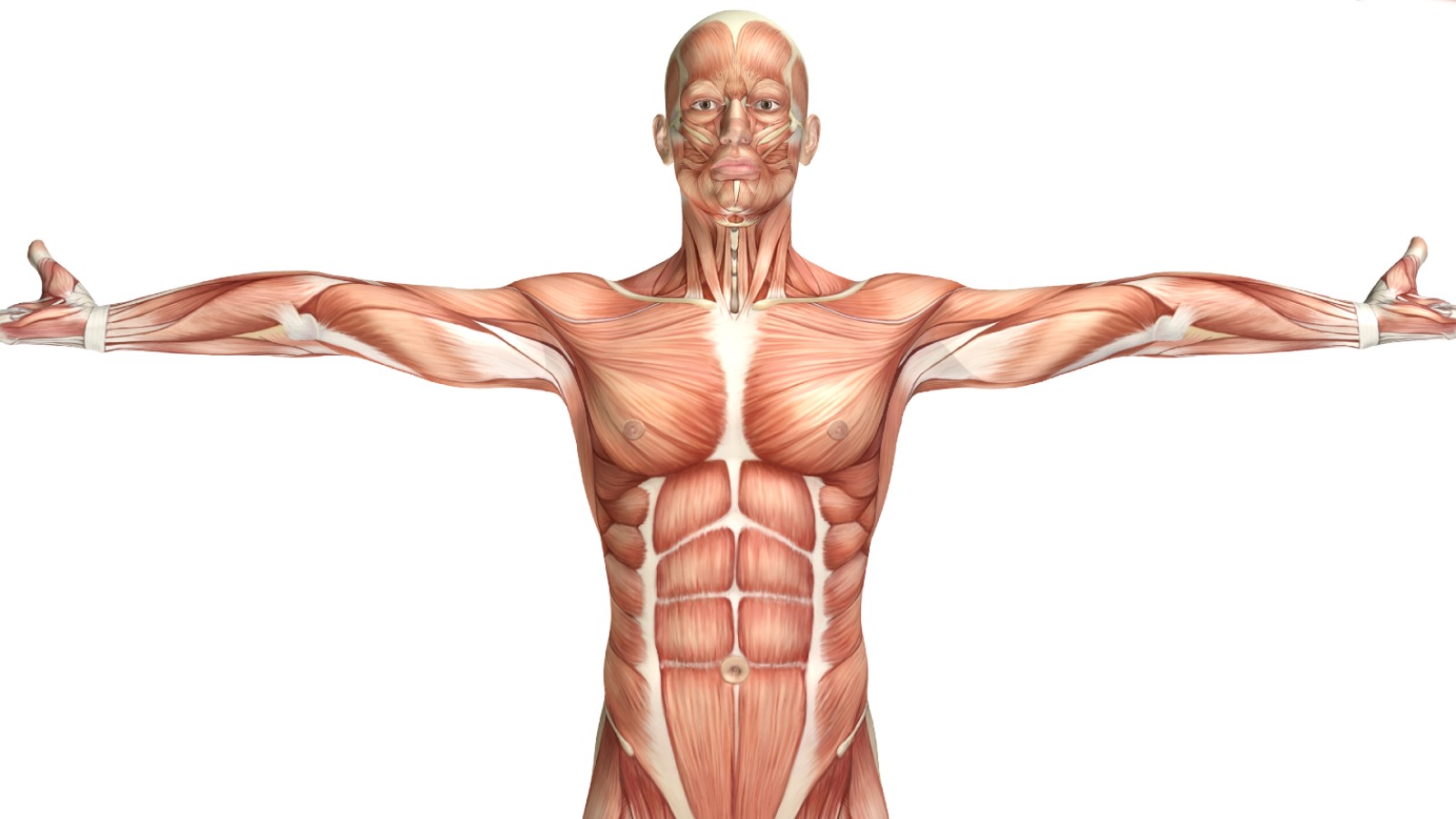Anatomy and Physiology is a complicated topic and includes numerous scientific references which may seem difficult to remember. However, there are various common terms that will help you to better understand basic anatomy and physiology. Essentially, anatomy and physiology are two branches of science and together they provide the foundation of knowledge of the body's parts and functions, therefore, they are often studied together.
-
Anatomy - Is the study of the body's structures or parts. It is basically asking (and answering) the questions of "What is that?" and "Where is it located?"
-
Physiology - Is the study of the functions of body parts. It is asking (and answering) the question of "What does it do?"
In order to correctly understand the anatomical axis it is important to have an understanding of the standard anatomical position. This is the position that anatomists start the body in and from which all movements are made and understood.
The anatomical position is standing upright and facing forward, arms by the sides and palms facing forwards, legs straight, feet flat and pointed forward. See image below:

Anatomical or body planes also referred to as planes of movement and axes divide the body or an organ into different sections.
The three planes are:
-
Transverse - Top half and bottom half divided by the waist. Joint movements such as rotation (twisting) of the spine are classified in the transverse plane.
-
Frontal or Coronal - Front half and back half. Joint movements such as adduction and abduction of the shoulder or hip to laterally (sideways) raise and lower the arm or leg are classified in the frontal plane.
-
Sagittal - Left half and right half (identical halves). Joint movements such as flexion and extension of the elbow or knee (among others) are usually classified in the sagittal plane.
The three axes (axis) are:
-
Sagittal - Passes horizontally from posterior to anterior and is formed by the intersection of the sagittal and traverse planes.
-
Frontal - Passes horizontally from left to right and is formed by the intersection of the frontal and transverse plans.
-
Vertical - Passes vertically from inferior to superior and is formed by the intersection of the sagittal and frontal planes.
Planes, plus the anatomical position are the foundation of the terminology which is predominantly used by sports scientists and medical professionals, to describe how the body moves and where various structures are located.

Using the anatomical position as a starting point, the location of all organs, systems and other body parts can be described using directional terms. Common examples of these terms are described in the below table:
| Directional Term | Definition | Example of use |
|---|---|---|
| Posterior | Nearer to or at the back of the body | The esophagus (food tube) is posterior to the trachea (windpipe) |
| Anterior | Nearer to or at the front of the body | The sternum (breastbone) is anterior to the heart. |
| Medial | Toward the midline of the body. Think of the spine as your 'plumb line' down the middle (midline) of the body, splitting your body into equal left and right halves. | The ulna (forearm bone) is medial to the radius (other forearm bone) |
| Lateral | Away from the midline of the body | The lungs are lateral to the heart |
| Superior | Toward the head (or towards the upper part of the body) | The heart is superior to the urinary bladder |
| Inferior | Toward the feet (or towards the lower part of the body) | The stomach is inferior to the lungs |
| Proximal | Toward the attached end of a limb or hollow tube/vessel | The humerus (upper arm bone) is proximal to the radius (one of two forearm bones) |
| Distal | Away from the attached end of a limb or hollow tube/vessel | The phalanges (finger bones) are distal to the carpals (wrist bones) |
| Superficial | Nearer to or on the surface | The ribs are superficial to the lungs |
| Deep | Farther away from the surface | The ribs are deep to the skin of the chest and back |
| Intermediate | Between two other parts | The heart is intermediate to the lungs |
When using directional terms to describe an organ or structure, it is helpful to provide a reference point. For example, saying 'The kidney is inferior' doesn't adequately describe its location because there is no a point of reference. Build on this statement by saying 'The kidneys are inferior to the diaphragm' which provides a clearer picture of their location. To further pinpoint their location 'The kidneys are inferior to the diaphragm and anterior to the large intestines'.
This video offers fun techniques to help remember the various terms relating to directional terminology.
This video offers fun techniques to help remember the various terms relating to movement terminology.
| Movement Term | Definition |
|---|---|
| Flexion | Actions that decrease the joint angle |
| Extension | Actions that increase the joint angle |
| Abduction | Moving away from the midline of the body |
| Adduction | Moving closer to the midline of the body |
| Pronation | Turning the hand so the palm is facing downwards |
| Supination | Turning the hand so the palm is facing upwards |
| Dorsiflexion | Pointing the foot in an upward direction |
| Plantarflexion | Pointing the foot in a downward direction |
| Circumduction | Circular movement in a 360° range using a combination of flexion, extension, adduction and abduction. Best performed by ball and socket joints such as the hip and the shoulder, however other joints such as the fingers, hands, feet and head are also able to this type of movement. |
| Inversion | Tilting the foot toward the midline of the body |
| Eversion | Tilting the foot away from the midline of the body |
Biomechanics is the application of scientific principles of mechanical physics to understand the movements and actions of the human body especially in relation to physical activity such as sports. It is closely related to kinesiology which is the scientific study of human movement.
There are some key terms which are often used when discussing biomechanics:
| Biomechanical Term | Definition |
|---|---|
| Mass | Amount of matter in an object. |
| Force | An action that changes or tends to change the motion of an object. Result of the equation mass times acceleration. Displayed in a vector quality meaning it occurs in a particular direction. Measured in Newtons. |
| Pressure | The ratio of force to the area over which force is applied. |
| Velocity | Speed and direction of the body and a given direction. Typically measured in meters per second or kilometres per hour. |
| Acceleration | Change in velocity involving the speed or direction. |
| Angular Velocity | The angle that is rotated in a given unit of time. Often measured in degrees per second or radians per second. |
| Angular Acceleration | Change of angular velocity in a given unit of time. |
| Gravity | The natural force that pulls all objects towards the centre of the earth. |
| Friction | The force that occurs when surfaces come in contact and results from sliding of one surface on the other. |
| Work | The force that is applied to a body through a distance. Often reported in joules. |
| Strength | The body's ability to overcome resistance. |
| Power | The ability to exert a maximal force in as short a time as possible. It is the result of either dividing work by time or by multiplying force by velocity. Power is usually reported in watts. |
| Energy | The capacity of the body to perform work. Kinetic energy and potential energy. |
| Torque | Twisting, turning or rotary force related to the production of angular acceleration. |

